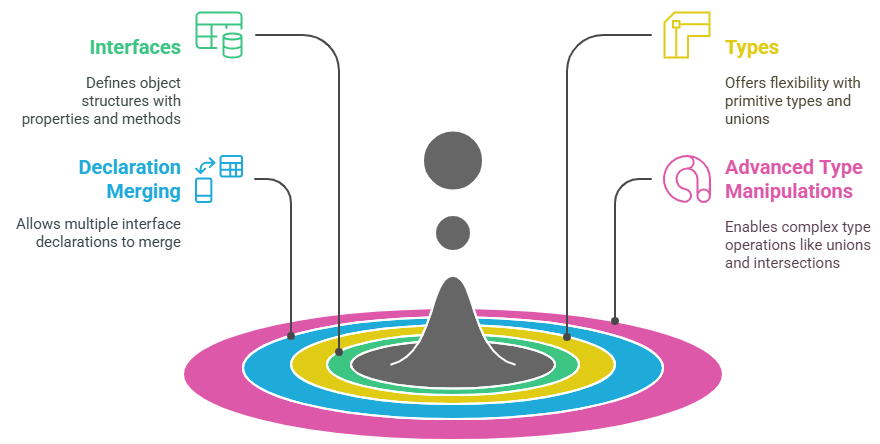
- Introduction to TypeScript
- Why Use TypeScript?
- Setting Up TypeScript
- TypeScript Basics
- Working with Interfaces and Types
- Classes and Objects in TypeScript
- Advanced TypeScript Features
- Integrating TypeScript with JavaScript
Introduction to TypeScript
TypeScript is a superset of JavaScript that adds static typing to the language, enabling developers to catch errors at compile time rather than runtime. Developed by Microsoft, TypeScript enhances the flexibility and scalability of JavaScript, particularly for large applications. It introduces features like type annotations, Web Developer Certification Courses, interfaces, and enums, which help define the shape and behavior of data more clearly. By offering strong tooling support, TypeScript improves the development experience with features such as autocompletion, type inference, and error checking in editors. While browsers do not directly execute TypeScript code, it is transpiled into standard JavaScript, ensuring compatibility across all JavaScript environments. TypeScript’s type system is optional, meaning developers can gradually adopt it in existing JavaScript projects, providing a smoother learning curve. The language also supports modern JavaScript features, including ES6+ syntax, and helps developers write cleaner, more maintainable code by preventing common bugs related to dynamic typing. With its growing popularity in the development community, TypeScript has become an essential tool for building robust, large-scale applications, making it easier to manage complex codebases while maintaining compatibility with existing JavaScript libraries and frameworks.
Are You Interested in Learning More About Web Developer Certification? Sign Up For Our Web Developer Certification Courses Today!
Why Use TypeScript?
- Static Typing: TypeScript’s static typing allows developers to define types explicitly, reducing the likelihood of runtime errors and making code easier to understand and debug.
- Better Tooling Support: TypeScript’s strong integration with IDEs provides features like autocompletion, inline documentation, and type checking, which improve the development experience and productivity essential topics covered in the What is Vue.js guide.
- Early Error Detection: With TypeScript, errors are caught during the compile-time process, helping developers identify and fix bugs before they can affect runtime performance.
TypeScript offers a range of benefits that can significantly improve the development process, especially for large and complex applications. It enhances JavaScript by adding features that increase code quality, readability, and maintainability. Here are six key reasons to use TypeScript:

- Enhanced Readability and Maintainability: The use of types, interfaces, and enums makes the code more self-documenting, which improves readability and makes it easier for teams to maintain large codebases.
- Scalability for Large Projects: TypeScript’s features, such as namespaces, classes, and modules, help manage the complexity of large applications, making it easier to scale and organize code effectively.
- Compatibility with JavaScript: TypeScript is fully compatible with existing JavaScript code, allowing developers to incrementally adopt TypeScript in their projects without needing a complete rewrite.
- Variables and Types: TypeScript allows you to define variables with explicit types. For example, let age: number = 30; specifies that age must always be a number. It supports basic types like string, number, boolean, any, and void.
- Type Annotations: You can explicitly define the type of variables, function parameters, and return values. For instance, function greet(name: string): string { return ‘Hello, ‘ + name; } ensures that name is always a string.
- Interfaces: Interfaces define the structure of an object, allowing you to enforce certain properties. For example, interface Person { name: string; age: number; } ensures objects implementing the Person interface follow the specified structure.
- Classes and Objects: TypeScript supports ES6+ class syntax, allowing you to define classes with properties, methods, and constructors, all with type safety. You can also define access modifiers (public, private, protected) for better encapsulation key concepts explained in What is Express JavaScript.
- Union and Intersection Types: TypeScript allows you to define a variable that can hold multiple types using union types (e.g., string | number). Intersection types combine multiple types into one (e.g., A & B).
- Generics: Generics allow you to write functions or classes that work with any data type, making your code reusable and type-safe. For example, function identity
(arg: T): T { return arg; } enables the function to work with any type while maintaining type safety. - Defining a Class: You can define a class using the class keyword. For example, class Person { name: string; age: number; constructor(name: string, age: number) { this.name = name; this.age = age; } } defines a basic class with properties and a constructor.
- Access Modifiers: TypeScript allows you to define the visibility of class properties and methods using access modifiers. public allows access from anywhere, private restricts access to within the class, and protected allows access within the class and subclasses a concept that parallels ideas found in What is Interface in PHP.
- Constructors: The constructor method is used to initialize an object when it’s created. You can define types for constructor parameters, ensuring the correct data type is passed when instantiating a class.
- Methods in Classes: Classes can have methods that define behavior. Methods are declared just like functions, but they belong to the class. For instance, sayHello() { return ‘Hello ‘ + this.name; } is a method inside the Person class.
- Inheritance: TypeScript supports class inheritance, allowing a subclass to inherit properties and methods from a parent class. This is done using the “extends” keyword, making code reusable and maintainable.
- Interfaces with Classes: You can also implement interfaces in classes. This ensures that the class adheres to the structure defined in the interface, helping enforce consistency. For example, class Employee implements Person {} forces Employee to implement the Person interface.
Setting Up TypeScript
Setting up TypeScript in your project is a straightforward process that enhances your development experience. First, ensure that you have Node.js installed on your machine. Once that’s done, you can install TypeScript globally using the Node Package Manager (NPM) by running the command npm install -g typescript in your terminal. This installs the TypeScript compiler, allowing you to compile .ts files into JavaScript. After installation, you can verify that TypeScript has been installed successfully by checking the version with tsc -v. To start using TypeScript in your project, initialize a tsconfig.json file by running tsc –init, which sets up the configuration for compiling TypeScript files a useful skill for understanding the and explore our Software Engineer Salary in the industry. This configuration file allows you to specify various compiler options, such as the output directory and which files should be compiled. Next, you can begin writing TypeScript by creating .ts files in your project. To compile your TypeScript files, simply run tsc in the terminal, which will transpile your TypeScript code into JavaScript. You can also use build tools like Webpack or integrate TypeScript with modern frameworks, such as Angular, React, or Vue, to streamline the development process. By setting up TypeScript correctly, you’ll be ready to enjoy its powerful features and improved development workflow.
Excited to Obtaining Your web developer Certificate? View The web developer course Offered By ACTE Right Now!
TypeScript Basics
TypeScript builds upon JavaScript by adding static typing, but many of its core concepts will feel familiar to JavaScript developers. Learning TypeScript begins with understanding its basic features, which enhance the way you write and organize your code. Here are six fundamental aspects of TypeScript:
Interested in Pursuing web developer certification Program? Enroll For Web developer course Today!
Working with Interfaces and Types
In TypeScript, both interfaces and types are powerful tools for defining the structure of objects and ensuring type safety. An interface in TypeScript defines a blueprint for objects, dictating what properties and methods they must have. For example, interface Person { name: string; age: number; } ensures that any object of type Person must have a name (string) and age (number). Interfaces can also extend other interfaces, enabling code reuse and modular design. On the other hand, types offer more flexibility, allowing not only object shapes but also primitive types, union types, and intersections key concepts in Web Developer Certification Courses. For instance, a type alias type ID = string | number; enables a variable to be either a string or a number. Unlike interfaces, types can be used for more complex scenarios, like creating unions, intersections, or even mapped types. While both interfaces and types serve similar purposes, interfaces are typically preferred when defining object shapes, as they support declaration merging, allowing multiple declarations of the same interface to merge into one. Types, however, are better suited for creating unions, tuples, and advanced type manipulations. Understanding when and how to use interfaces and types will help you write more maintainable and scalable TypeScript code, leveraging both for different use cases effectively.

Classes and Objects in TypeScript
TypeScript enhances JavaScript’s class system by adding static typing, making object-oriented programming more robust and error-resistant. Classes in TypeScript help encapsulate data and behavior, while objects are instances of these classes. Here are six key points to understand when working with classes and objects in TypeScript:
Advanced TypeScript Features
TypeScript offers a variety of advanced features that enhance the power and flexibility of the language, making it suitable for large-scale, complex applications. One key feature is Generics, which allows developers to create reusable components that work with any data type while maintaining type safety. For example, a generic function can be written as function identity
Integrating TypeScript with JavaScript
Integrating TypeScript with existing JavaScript projects is a smooth and flexible process, allowing developers to adopt TypeScript gradually without rewriting the entire codebase. Since TypeScript is a superset of JavaScript, all valid JavaScript code is also valid TypeScript, which means you can start by renaming .js files to .ts and gradually adding type annotations and interfaces as needed. The allowJs option in the tsconfig.json file enables the TypeScript compiler to process JavaScript files alongside TypeScript files, making mixed-language projects easy to manage. You can also use checkJs: true to enable type-checking in JavaScript files using JSDoc comments, providing type safety without fully converting to TypeScript a concept covered in Web Designing Training. This approach is ideal for large codebases or teams transitioning slowly. Modules and libraries written in JavaScript can still be used in TypeScript with the help of type declaration files (.d.ts), either written manually or installed from DefinitelyTyped using npm install @types/library-name. Tooling support in editors like VS Code further simplifies integration by offering autocomplete, type inference, and real-time error checking across both TypeScript and JavaScript files. Overall, integrating TypeScript with JavaScript enhances code quality while preserving compatibility, making it an effective strategy for modernizing existing projects.

